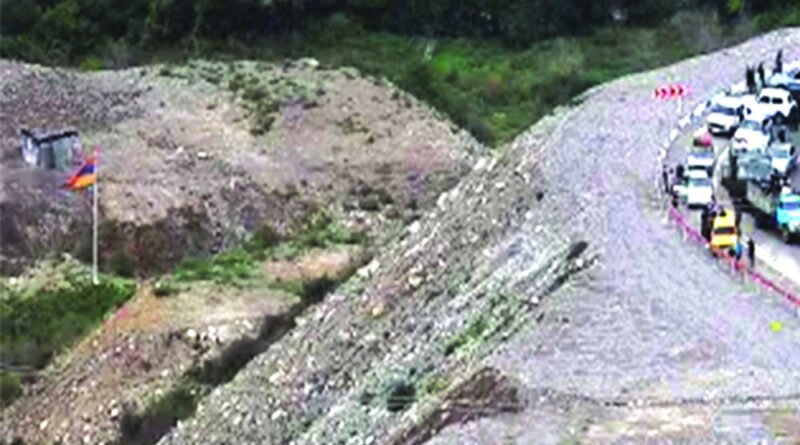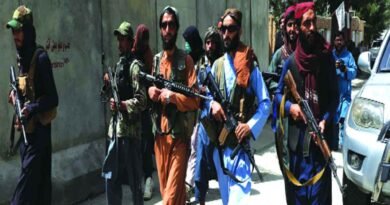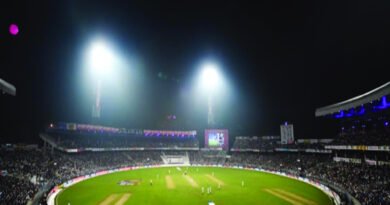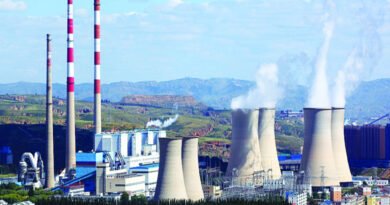Nagorno-Karabakh conflict: No endgame
The Nagorno-Karabakh conflict spans over three decades, rooted in territorial disputes between Azerbaijan and Armenia. Despite internationally recognised as part of Azerbaijan, the region is predominantly Armenian-populated. Recent tensions, exacerbated by border restrictions, pose a risk of genocide. International intervention is crucial to ensure ethnic Armenians’ safety and regional peace.
The conflict in the Nagorno-Karabakh region is now more than three decades old. This disputed territory lies in the mountainous South Caucasus region, situated between the Black Sea and the Caspian Sea. Known as Artsakh to Armenians, this landlocked region falls within the sovereign borders of Azerbaijan, but it is predominantly populated by ethnic Armenians. While internationally recognised as a part of Azerbaijan, it is currently home to over 120,000 Armenians who resist being under Azerbaijani control. Both Azerbaijan and Armenia fought in the 1980s and 1990s to gain control of this hilly region, but were unsuccessful in their attempts.
As the conflict has resurfaced, it is worth examining the historical background of the issue. In 1923, Vladimir Lenin, the first leader of the USSR who ruled the Soviet Union from 1917 to 1924, established the Nagorno-Karabakh Autonomous Oblast within the Azerbaijan Soviet Socialist Republic. At that time, it was home to a 95 per cent ethnic Armenian population. The problem arose in 1988, just two years before the dissolution of the USSR, when the regional legislature of Nagorno-Karabakh passed a resolution indicating its desire to join Armenia, despite the region being an integral part of Azerbaijan. It is widely understood that ethno-nationalism has played a vital role in mobilising people for nationhood since the beginning of modern civilisation. This strongly influenced the Armenians living in this enclave, and they gradually prepared themselves to become a part of neighbouring Armenia. With the dissolution of the USSR in 1991, both Armenia and Azerbaijan became independent nations.
Meanwhile, the Nagorno-Karabakh oblast declared independence, leading to intense fighting between Armenia and Azerbaijan. By 1993, the Armenian security forces had occupied the region and also gained control over 20 per cent of the neighbouring Azerbaijani territory. In 1994, Boris Yeltsin, the first leader of the Russian Federation, successfully negotiated a peace deal known as the Bishkek Protocol between the two former Soviet Republics.
However, it did not resolve the territorial dispute and left the Nagorno-Karabakh region de facto independent. Peace between the two warring neighbours was maintained for some time with the influence of Moscow. However, once the USSR disintegrated, these peripheral republics became more conscious of their rights, priorities, and sovereign frontiers and they tried to re-establish their external relations with other nations around the globe.
From 1994 to 2015, there was peace between Armenia and Azerbaijan. In 2016, heavy fighting erupted once again. Then, in late September 2020, fresh clashes broke out along the Azerbaijan-Nagorno-Karabakh border. Azerbaijan regained much of the territory from Armenia and left a small portion of Karabakh to Armenia. The war came to an end with a Russia-brokered peace deal in November 2020.
The most significant aspect of this agreement was the establishment of the Lachin Corridor, which allowed Armenia to connect to the Nagorno-Karabakh enclave under strict monitoring by Russian peacekeepers. The main trouble started in December 2022 when activists from Azerbaijan blocked the Lachin Corridor, halting all supplies coming to Nagorno-Karabakh from Armenia. This further led to the opening of a checkpoint by the Azerbaijani government on the corridor, alleging the supply of arms to Armenian separatists in the Nagorno-Karabakh region.
To put an end to the hostilities between the two neighbours, the US, Russia, and the European Union hosted talks with representatives from Baku and Yerevan. Finally, Armenian Prime Minister Nikol Pashinyan and Azerbaijani President Ilham Aliyev made considerable progress towards peace after constant intervention by the major powers and pressure from the UN to maintain tranquility in the region. It is positive for the international community that Pashinyan recognised the entire Nagorno-Karabakh enclave as the sovereign territory of Azerbaijan. He also emphasised that Baku must respect the internationally recognised boundary of Armenia and ensure the protection of ethnic Armenians living in the Nagorno-Karabakh region.”
What has happened in Nagorno-Karabakh now? On September 19, in the days following the opening of the Lachin border, people from both sides of the frontier hoped that normalcy would be back to the disputed territory. This deal came as a result of an understanding between the Azerbaijan Government and the Armenian separatists of the Nagorno-Karabakh oblast. The agreement aimed to reopen two disputed transport routes, including a crucial link road known as the Lachin Corridor.
What has really worsened the ground situation is that for the last more than nine months, Azerbaijan authorities are tightly restricting the movements of the Armenian Government with the Nagorno-Karabakh oblast through the Lachin Corridor.
Earlier Azerbaijan accused Armenia of smuggling arms and ammunition by using this route to the Nagorno-Karabakh. When the historic deal was sealed between two warring nations, the self-proclaimed Republic of Nagorno-Karabakh declared the election of a new President named Samvel Shahramanyan for it simultaneously. This move, which irked the Azerbaijani Government, was declared as illegal. For Baku, this election is purely illegal. Azerbaijan referred to the government as a “puppet separatist regime” at the heart of all troubles between the two nations.
While echoing concerns for a new flare-up, the Azerbaijani foreign ministry reiterated that “the only way to achieve peace and stability in the region is the unconditional and complete withdrawal of the Armenian armed forces from the Karabakh region of Azerbaijan and the disbandment of the puppet regime”.
Meanwhile, both Ukraine and Turkey voiced support for Azerbaijan’s claim over Karabakh and denounced the election held in the region. The European Union has taken a very cautious stand by saying that it did not recognise the election but wanted the people of the Nagorno-Karabakh to consolidate around its de facto leadership while dealing with Armenia.
Many in Armenia fear that the people in the Nagorno-Karabakh enclave may face genocide in 2023. The way Baku is asserting control over the disputed territory is alarming. We are all aware of the Armenian genocide of 1915, when people of Armenian origin were massacred in Anatolia, in what is now modern-day Turkey. It is ironic that the US remained silent about the Armenian genocide until 2021, when President Biden finally publicly recognised it.
Currently, the ethnic Armenians in the Nagorno-Karabakh oblast need the support of global governance institutions like the UN, as well as intervention from major powers such as the US, the Russian Federation, and the European Union, to prevent a potential genocide in the enclave.
What is concerning are the messages coming from Baku and President Aliyev. In the past, Aliyev did not abide by the verdict of the International Court of Justice (ICJ) which instructed Baku to reopen the Lachin Corridor. He has consistently disregarded requests from the UN and US Secretary of State Antony Blinken to comply with the ICJ’s ruling. His government has assured the international community that reintegration will bring development and prosperity to Nagorno-Karabakh.
However, it is alarming that since 2010, Aliyev has reportedly stated that Armenia itself is “Western Azerbaijan”, and last December, he declared that “present-day Armenia is our land”. Furthermore, for years, Azerbaijan has maintained that Armenia is an illegitimate state. These are serious warning signals for the entire world, for Armenia, and for the conflict-ridden Nagorno-Karabakh oblast.
At present, Azerbaijani forces have fully occupied the Nagorno-Karabakh region whose separatist leaders have laid down their arms. However, thousands of ethnic Armenians are fleeing to Armenia, fearing for their lives and the sudden change in the status quo.
It is time for the international community to ensure the future safety of ethnic Armenians in Azerbaijan. President Aliyev must work towards restoring peace and tranquility to the Nagorno-Karabakh region. He should refrain from seeking further escalation of the crisis. Otherwise, pressure on Pashinyan might lead Armenian forces to reclaim the oblast, potentially sparking a bloody war in the region.
The time has come for both Baku and Yerevan to bid farewell to arms.
(The writer is currently president of the Global Research Foundation)
Source: The Pioneer news




